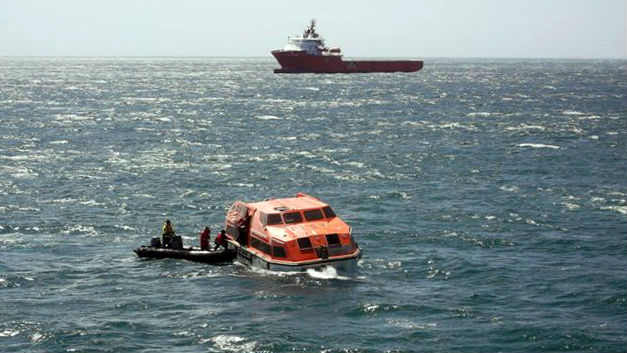The Week in Review: Passenger Vessel Safety

The French-flagged cruise ship Le Boréal suffered an engine room fire while sailing in the Southern Atlantic last Wednesday. The rescue of the vessel’s 350 passengers and crew was successful, and it was a reminder of both of the industry’s continuing achievements in safety and the accidents that continue to plague it.
After the loss of the Costa Concordia in 2012 and the engine room fire on Carnival Triumph in 2013, last year was another watershed year for passenger shipping with the sinking of the South Korean ferry Sewol on April 16, 2014. More than 300 people died in the disaster, and it was followed by a second high-profile incident with a fire onboard the Norman Atlantic in Greek territorial waters on December 28.
These last two incidents underline a worrying gap in crew training when it comes to emergency operations on ro-ro/passenger ships, stated insurance company Allianz in its third annual Safety and Shipping Review for 2015.
However, it also noted that shipping losses have continued a 10-year downward trend, which began in 2005, and the industry continues to be active in the development of new safety solutions.
RFID to Locate People on Board
One recent initiative is the Safer Ships project within the E.U.-funded MONALISA 2.0 project. The Italian Ministry of Transport coordinates Safer Ships, with the technical assistance of classification society RINA.
Flavio Marangon, head of the Safer Ship part of the project, shared its achievements at a conference earlier this month, one of which is the development of a new RFID-based indoor positioning system to assist in evacuations.
A pilot application of the RFID-based system that can locate people on board a vessel in real time has been designed, implemented and installed on the cruise ship the Ruby Princess and is used by the crew. It requires each individual to carry a smart card in order for the system to locate them.
A test was performed in July when the Ruby Princess was in Alaska and the Milan based team observed the people on board the vessel in real time. “We communicated instructions such as ‘leave this room’ and we observed how the individual moved on the screen. Based also on the outcome of MONALISA 2.0, the Italian Ministry of Defence decided to install an evolution of the system on the ships that are being built for the Italian navy. It feels like a great success,” says Marangon.
The pilot application of the RFID-technology for indoor positioning of crew and passengers, and emergency guidance has indicated that it can reduce the number of fatalities and injuries as well as damages. A cost benefit analysis indicates that the payback period should be between 3-5 years.
 Launching Lifeboats at Heels over 20 Degrees
Launching Lifeboats at Heels over 20 Degrees
Another achievement of the project, discussed by Marangon, is the development of a prototype for safe life boat launching at heel over 20 degrees which has now been tested in the basin at Centro Jovellanos in Gijon, Spain.
Most existing lifeboats cannot be launched safely if the vessel is sinking with the heel of over 20 degrees to the opposite side. In most conditions the boat would fall on the deck and not out to the shipside.
The solution is based on existing technologies and materials, and the innovation consists of the design of accessories that can be installed to improve the functionality of the equipment that is already in use.
Managing Hot Spots
After the Carnival Triumph case, Carnival put in place a hot spot analysis across the fleet, run by RINA, to identify areas where accidents or other problems could occur before they did. A spate of ferry fires in the Med then led RINA to launch its ferry safety initiative with a strong focus on special training for the crew in fire prevention.
Building on the work done with Carnival and others, RINA developed the new scheme to aid ship operations in their vigilance regarding fire risk in engine rooms. It has been working with major cruise ship operators including Carnival, MSC Cruises and Moby Lines to introduce a preventative, risk assessment and management approach to operations and maintenance. The idea is to bring the disciplines used in the offshore industry into passenger ship operations.
The Asset Integrity Management scheme for ro-pax ferries covers fire risk mitigation, single-failure risk assessment, enhanced planned maintenance and condition-based monitoring and also food and bacteriological risk management. The initiative also covers specific training for ro-pax crews, including behavioral training to avoid and manage crises. All of the components are brought together under one best management scheme to monitor and follow up the component parts in operation.
The first company to use the new package is Grimaldi Lines which will implement the measures on the 22.5 knot 954-passenger ro-ro pax vessel Florencia.
More information on the Safer Ships project is available here.
The opinions expressed herein are the author's and not necessarily those of The Maritime Executive.
